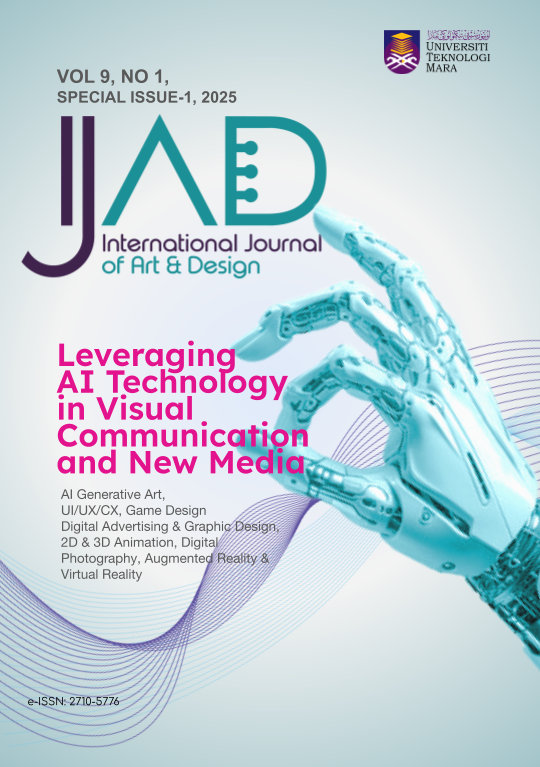Digital Innovation in Museum Exhibitions: An Augmented Reality Framework for Dezhou City Museum
DOI:
https://doi.org/10.24191/ijad.v9i1/SI.3737Keywords:
Interactive Exhibition, Augmented Reality, Museum Users, Museum ExhibitionAbstract
Continuity advancement of science and technology, coupled with a surge in cultural consciousness and improved cultural literacy. Recently increase year by year in the number of museums across China. Due to this national trend, Dezhou City in Shandong Province has also established its own museum, primarily dedicated to preserving and exhibiting the city’s historical culture and significant artefacts. It serves as a place for local residents to visit, engage in educational and cultural dissemination, and provide valuable physical and documentary support for researchers studying relevant issues. However, as time progresses, traditional museum exhibitions have become inadequate in meeting the demands of modern visitors. The researcher has designed new exhibitions for the museum using AR (Augmented Reality) technology by taking Dezhou City as a case. This paper outlines the trend of exhibition design using AR technology and emphasises core issues including the accuracy and appropriacy of exhibits and whether the demands of visitors are well catered to. The researchers conducted field surveys and observations by qualitative research methods at the Dezhou Museum, for which the research findings were used to help devise an Augmented Reality (AR)-based exhibition framework. The aim is to investigate how the application of AR technology can help in the digital transformation of Dezhou's museum exhibitions and ultimately design an exhibition framework based on Augmented Reality (AR) technology for the Dezhou City Museum. Exploring the current situation through literature reviews, summarising the forms of AR technology applications, and analysing existing exhibitions and sections on a per-hall basis, the study intends to identify the weight and matching forms for the transformation of the first and the third exhibition halls. The conclusion outlines the design trends and paths for interactive exhibitions and potential research directions.
Downloads
Published
Issue
Section
License
Copyright (c) 2025 International Journal of Art and Design

This work is licensed under a Creative Commons Attribution-NonCommercial-NoDerivatives 4.0 International License.






